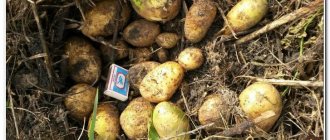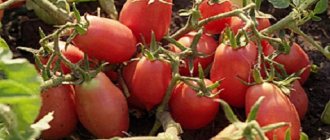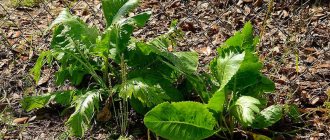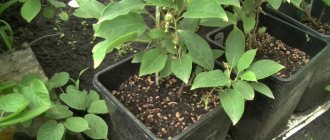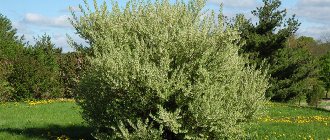A root vegetable is a part of a plant that stores nutrients, most often associated with the root system, hence the first part of the name.
They are not fruits; the second part of the name is biologically incorrect, but traditional.
In agriculture, root crops are called both plants specially grown for the sake of powerful, succulent underground organs (root plants), and those parts that are actually harvested and used as food and animal feed.
The formation of root crops involves the main shoot (basal part), the hypocotyl and the main root of the plant.
List of vegetables classified as root vegetables:
- Beetroot (beetroot, beetroot);
- Carrot;
- Turnip;
- Radish;
- Radish (European radish);
- Turnips (forage turnip);
- Parsnip (field borscht);
- Celery;
- Parsley;
- Arracacha;
- Rutabaga (kalega, bukhva, Swedish turnip);
- Loba (Margelan radish, lobo, Chinese radish);
- Maca peruviana (Maca meiensis, Peruvian ginseng);
- Scorzonera (Spanish goat, black root, sweet Spanish root);
- Oat root (salfifolium, tragopogon, white root, salsiphy);
- Daikon (Japanese radish, Chinese white radish, muli, bailobo, sweet radish, white radish).
What do you need to know? Description
Botanical description of a root vegetable
During the first year of life, most root vegetables develop a rosette of leaves and a “root vegetable.”
Its upper part - the “head” - bears a rosette of leaves and is formed by a shortened stem.
Under it there is a “neck”, which is a subcotyledonous knee, or hypocotyl - a section of the seedling stem between the cotyledons and the main root (for example, in carrots) or only its upper part (for example, in beets, turnips, rutabaga).
The root itself—usually the main root of the seedling—branches to form lateral roots.
The outside of the root crop is covered with a cork (covering tissue), inside of which are located the bast and woody parts of the root crop, consisting mainly of storage parenchyma (plant tissue that performs the function of storing and supplying nutrients).
The mass of the “root vegetable” consists of an overgrown parenchyma of secondary xylem (brassica family) or secondary phloem (umbrella family) and sometimes bark (carrots).
In beets, a growth ring of xylem and phloem is formed by several rings of cambium, and nutrients are stored in the parenchyma.
In the 2nd year of life, a flowering and fruiting stem develops from the buds located in the axils of the rosette leaves.
After fertilization and seed maturation, the plant dies.
Root crops are demanding of moisture. Good yields are obtained on fertile, loose soils, especially with artificial irrigation.
Root vegetables accumulate sugar (sugar beets, rutabaga), inulin (chicory), starch (katran), mineral salts, vitamins (carrots, turnips, radishes).
They are used for food in boiled, stewed and raw form, they are dried and canned. An important component of succulent feed for farm animals.
Root functions
The modified, thickened roots of plants, called roots, accumulate nutrients in their composition, thanks to which they are used as food and as medicinal plants. The function of root crops, in addition to the main one, is to obtain seed material for subsequent propagation of the crop.
If in the first year of life they are intended to be used for their intended purpose, then left in the ground the next year they will provide seeds that meet all the characteristics of the variety. In the life of two-year-olds, it is precisely due to the substances accumulated in the previous year that root vegetables will ensure the full growth of the testes. Roots form from the buds located in the axils, the above-ground part of the plant begins to grow, and a flowering and fruiting stem develops. As a result, after the secondary cycle, the root crops die off.
The role played by root vegetables in relation to human life is multifaceted. They are used in a wide variety of industries, using them for their intended purpose and as planting material.
Fiber-rich root vegetables serve many functions for the body:
- strengthen the immune system;
- restore vitamin reserves;
- improve metabolic processes and the functioning of the gastrointestinal tract.
Growing environmentally friendly products on your own plot is becoming popular. Agrotechnical methods do not require special skills.
Root plants are very light-loving; lack of sunlight leads to a decrease in yield. The exception is radishes. It grows and develops fully even in shaded areas. Thanks to their developed, fairly powerful root system, vegetables tolerate drought more easily than other garden crops.
Reference! Radishes and turnips do not tolerate dry weather well. Their protective shell thickens and becomes woody, their softness loses its taste, and the fibers become coarser.
Growing root crops is becoming a profitable and widespread business. The latest technologies and methods allow us to minimize financial and physical costs.
Kinds
The internal structure of individual root crops is not the same - depending on which part (bast or woody) nutrients are deposited to a greater extent, root crops are divided into the following types :
Root vegetable like carrot
(Carrots, parsley, parsnips, celery)
Nutrients are deposited mainly in the secondary bast located under the cork. That is why the bast part of root vegetables such as carrots occupies most of the root crop.
The core of the root vegetable (woody part) is less colored, has more lignified cells, and contains fewer nutrients. The lower the specific gravity of the core, the more nutritious the root vegetable will be.
Radish-type root vegetable
(Radish, radish, rutabaga, turnip)
Nutrients are deposited in the woody part of the root crop, which occupies most of it. The underdeveloped bast part of such root vegetables adheres tightly to the skin.
Root crops have a round or elongated shape, color from white to dark red. Root vegetables such as radishes are rich in glycosides and essential oils.
Root vegetable like beet
(Sugar beet, table beet)
Lighter (woody) and darker (bast) rings of pulp alternate.
Nutrients are deposited in the bast part of such root crops, and tree rings have more woody elements and fewer nutrients.
Features of cultivation
In order for the root to accumulate the largest possible amount of useful substances, it is important to take into account the rules and characteristics of cultivation.
The basic principles of care include:
- Mandatory loosening of the soil - root crops grow best on loose sandy loam soils. On chernozem, it is recommended to carry out regular loosening to recreate the loose effect of sandy loam soil. The need for soft soil is due to the fact that during growth there is an increase in volume. If there is too hard soil or a stone on the way, this leads to deformation of the vegetable and slows down its growth;
- Observe intervals when planting - if you plant vegetables too thickly, the crop will not die, but its quality will deteriorate significantly. Vegetables will be smaller and weaker if they do not have enough space to develop;
- Provide sufficient sunlight. In order for the underground part to begin to develop, many representatives of this group first need to grow the top. It will not be possible to do this fully in the shade;
- Regulating soil temperature - it is better to plant vegetables during spring cooling. To prevent the soil from warming up too much, it is recommended to cover it with a layer of mulch. In such conditions, plants develop better, but it is important to ensure that rotting does not begin;
- Systematic watering - the norm for plants is 3 cm of water per week. In addition, it is important not to forget about drainage, since if there is excessive moisture, there is a danger of root rotting;
- Systematic application of fertilizers. Mineral fertilizers are in dire need of frequent potassium and phosphorus fertilizing, while not so much nitrogen is absorbed. It is recommended to apply fertilizers the season before the actual planting of the crop. Do not get too carried away with this, as there is a danger of harming the harvest.
Compliance with all planting and care rules ensures the activation of nutrient accumulation. The more useful elements a vegetable has accumulated, the greater its value.
Let's watch a video about the beneficial properties of root vegetables:
Families
Root vegetables belong to different botanical families:
- the cabbage family (order Brassica class Dicotyledonous division Flowering) - radish, turnip, radish, daikon, loba, turnip, rutabaga, Peruvian poppy;
- family Umbellaceae (order Umbelliferae class Dicotyledonous division Flowering) - carrots, parsnips, celery, parsley, arracacha;
- family Asteraceae (order Asteraceae class Dicotyledonous division Flowering) - scorzonera, oat root.
While the root crops of the Cabbage and Umbrella families are grown en masse in our country, the root crops of the Asteraceae family cannot boast of this.
However, some gardeners grow them in their garden plots.
Scorzonera and oat root are very nutritious and tasty vegetables, which also have a number of medicinal properties. It is not for nothing that these root vegetables are deservedly popular in many countries around the world.
Application
Root vegetables make up a significant part of the diet of residents of many countries around the world, including Russia.
In our country, root vegetable crops are widely cultivated; carrots , beets , and radishes . Root vegetables are rich in carbohydrates, contain many minerals, vitamins, proteins and other substances necessary for the body.
Root vegetables are eaten in a variety of forms: raw, stewed, boiled, fried, dried, canned.
Carrots, beets, turnips and rutabaga are grown as fodder root crops in Russia. These root vegetables produce a lot of juicy mass, which contributes to better absorption of roughage and concentrated feed by animals.
Root vegetables are widely used in medicine. Indications for the use of a particular root vegetable are determined by the beneficial substances it contains.
For example, carrots are used to treat hypovitaminosis, radish as a diuretic, beets and turnips to improve digestion.
When are these crops harvested?
There are several qualities that directly affect the harvest time of root crops.
You need to pay attention:
- For the root crop variety;
- For cultivation purposes;
- Recommended ripening periods;
- Stable weather;
- Personal preferences.
But the most important characteristic that affects the time of harvesting root crops is the condition of the plant and its appearance.
So, all experienced gardeners certainly notice that the foliage of the above-ground parts begins to dry out and turn yellow.
In the case of root crops, this is the surest sign that the plant has accumulated enough nutrients in the roots and is ready to be dug up.
It is during this period that, as a rule, the protective shell of the root crop is ready for long-term storage, as well as acting as an effective barrier in protection against diseases and pests.
The first vegetables that are usually harvested are:
- radish;
- beet;
- turnip;
- radish;
- carrot;
- celery.
Sometimes the following are left in the ground for the winter:
- parsnip;
- oat root;
- Jerusalem artichoke.
But they should be dug up already in early spring, otherwise the plant, under favorable conditions, will immediately begin to form arrows and absorb all the useful substances accumulated in the root.
On a note! Each root vegetable has its own characteristics. For example, remember that beets do not like frost. Carrots, on the contrary, continue to accumulate vitamins and nutrients even during light frosts.
In the temperate climate of central Russia, the main vegetable harvest period most often falls from September to November. In the south, crops can grow until the end of autumn.
In the northern regions, as well as in the Urals and Siberia, they try to dig up the harvest from August to the end of September. It is considered incorrect to harvest vegetables ahead of schedule.
This can be resorted to in cold autumn or in the north of the country.
However, experienced gardeners advise leaving vegetables in the ground even in case of frost and not rushing to dig them up, but it is better to additionally protect them in the beds: cover them with earth, cloth or even polyethylene.
An important feature is the weather on the day of digging up vegetables. It is advisable that the day of work falls on dry and warm weather.
Then you won’t have to additionally wash the harvested crop and clean it of damp soil.
What plants produce roots?
Root crops are an integral part of the human diet. They are boiled, fried, stewed, canned. Consumed fresh, used for harvesting for the winter. They also pickle, salt, ferment, juice, puree and even jam.
In agriculture, this type of feed provides animals with the necessary amount of nutrients. As a rule, all types of root crops have a long shelf life. The high percentage of shelf life allows you to preserve the harvest of commercial quality for more than six months.
The most popular plants that form root crops are:
- beet;
- carrot;
- potato;
- Jerusalem artichoke;
- turnip;
- radish;
- horseradish;
- daikon;
- radish;
- turnip;
- root parsley;
- parsnip;
- oat root;
- celery.
They are used not only in cooking and preservation, but also in folk medicine.
There are 3 types of root vegetables: phloem, xylem, beet and consist of three parts:
- upper (heads with rosette leaves);
- middle (cervix);
- lower (root).
The shape of the root crop directly depends on which part of the plant took part in root formation. Most varieties with a flat and round shape show early ripening. Long, conical root vegetables, on the contrary, ripen later and are stored longer due to their high dry matter content.
When planting seeds that have been exposed to low temperatures for a long time, root plants grow, forming seed plants already in the first year of life. When bolted, vegetables grow small, of poor quality, practically unsuitable for food, and have a coarse fibrous structure. This anomaly is observed during early and winter sowings, during periods of unstable spring with temperature changes. Radishes are most often shot. But radishes are the only root crop that throws out a flowering stem already in the first year of cultivation.
How to store?
Root vegetables can be stored for quite a long time, but the most important condition that must be observed in the room intended for storage is a constant cool temperature.
That is why the ideal place to store vegetables for the winter is always the cellar.
Conditions that should be in the cellar:
- average humidity: 80% and above;
- air temperature within +1-8C;
- minimum light;
- availability of ventilation.
Important! Good owners always prepare the cellar for storing vegetables. To do this, treat the walls, floor and ceiling with lime, and, if possible, fumigate the room before each harvest.
Of course, they must get rid of the remnants of last year’s supplies and inspect all corners for rodent burrows and other pests.
As root crops are stored, they must be periodically inspected and sorted. Sick, rotting, spoiled vegetables must be disposed of immediately.
Basically, they try to adapt the cellar for storing large volumes of food. But if there are too many root vegetables (this often happens with carrots, beets, turnips), then they should be placed in bulk.
And in order to eliminate or reduce rotting, be sure to sprinkle the pile with earth or dry sand. Of course, it is correct to store different vegetables and root vegetables separately from each other.
Storing root vegetables
The best place to store root crops is in a room with a stable temperature. Cellars, basements, and specially equipped storage facilities with the ability to maintain temperature and air humidity are used. Storage methods in trenches, piles, and pits are popular.
- humidity within 96-98%;
- air temperature – from +1 to +5 degrees;
- separate containers (boxes, piles) for vegetables of different sizes and purposes;
- availability of ventilation;
- regular inspection and rejection.
Advice! For long-term storage, you should choose seeds of crops with a growing season of 120 days or more.
Large volumes are mainly stored in bulk, in piles or trenches. They are stacked in layers and covered with earth and straw. This method allows you to retain moisture in vegetables and extend shelf life until spring. With the onset of warm weather, such storage facilities are opened, root crops are sorted and sorted.
For carrots, the method using sand is practiced. Root crops sprinkled in layers can be stored in boxes, piles and trenches. The main requirement when planting vegetables outdoors is that the top layer should be maximally insulated and located 15-20 cm below the ground surface.
Before planting root vegetables, they need to be cooled. This is especially true if harvesting work was carried out in hot weather, with active sun. The most popular crops are potatoes, carrots, and beets. They are traditionally kept separately.
- Potato. The most common methods are storage in bags or boxes. Preference is given to natural materials so that root crops have the opportunity to breathe. The tubers must be sorted before storing. Seeds are stored separately from food products and must be separated by variety. For greater preservation, potatoes are sprinkled with sawdust or dried rowan leaves.
- Carrots are sprinkled with sand or onion peels. A method is practiced where each root vegetable is dipped in a liquid clay solution and dried. In small quantities it is stored in open plastic bags and boxes in city apartments on loggias and kitchens.
- Beets, radishes, and rutabaga can be stored in cellars or pits for a long time. Root vegetables are placed in stacks.
- Radishes and daikon are stored in tied plastic bags, ventilated periodically.
For preventive purposes, each layer of peeled root vegetables is sprinkled with wood ash. Treatment with drugs is effective:
Before placing the crop in the cellar, it must be cleaned of the remnants of last year's harvest and disinfected. The walls are treated with lime, the room is fumigated with smoke.
To preserve the harvest for as long as possible, vegetables must be regularly sorted and root crops with traces of rot and disease removed.
- Author: Maria Sukhorukikh
Rate this article:
- 5
- 4
- 3
- 2
- 1
(0 votes, average: 0 out of 5)
Share with your friends!
Beneficial features
Root vegetables are useful crops that are included in the diet of almost every inhabitant of the earth.
And for vegetarians, they even form the basis of nutrition, since they are quite nutritious and more or less capable of compensating for the complete absence of meat in the diet.
Of course, vegetables have many positive qualities:
- First of all, thanks to the special biochemical composition.
- Secondly, thanks to the invaluable ability to accumulate many vitamins and nutrients in its composition.
But different root vegetables can have different effects on the human body:
Carrot
It copes well with lowering blood sugar levels and is also extremely rich in carotene. The amount of vitamin A in 100 g. carrots constitute more than 100% of a person's daily requirement.
There is even information that carrots will reduce the risk of breast, stomach, and prostate cancer.
Radish
A very useful root vegetable for pregnant women. For example, it is extremely rich in folic acid (although most of it is found in radish tops). However, the vegetable also has a beneficial effect on hematopoietic processes in the body.
If you eat radishes from time to time, the level of hemoglobin in the blood will return to normal, the metabolism in the body will improve (this vegetable has a good effect on literally all organs and systems: the heart, blood vessels, liver, kidneys, intestines, stomach, spleen) .
